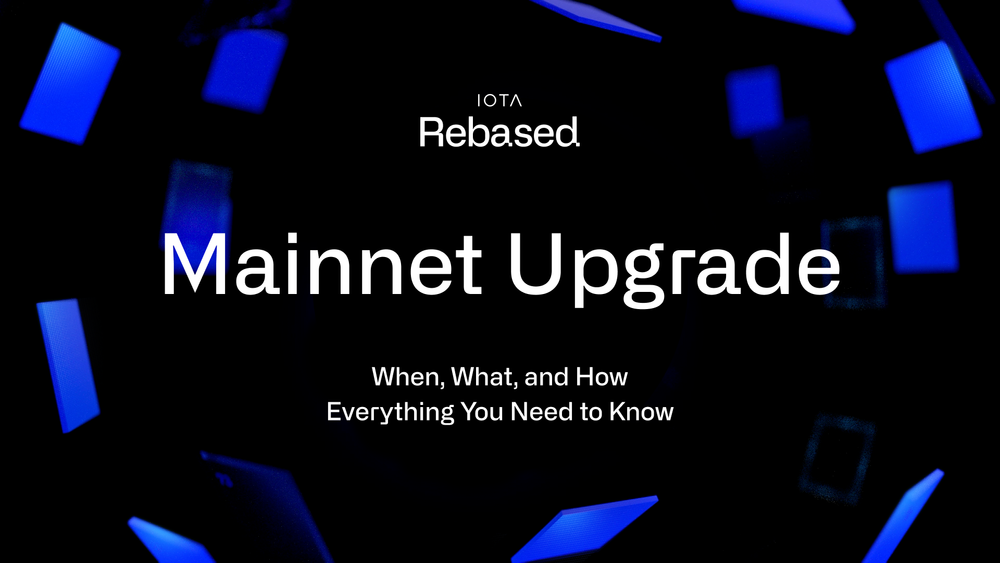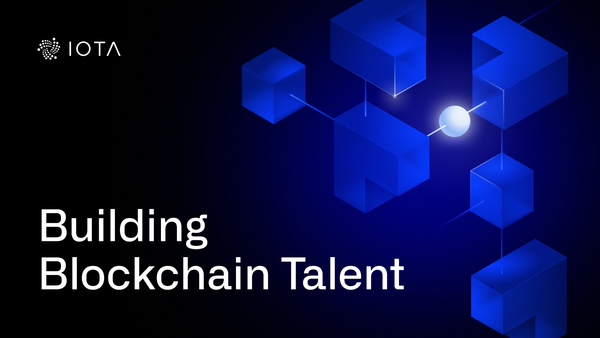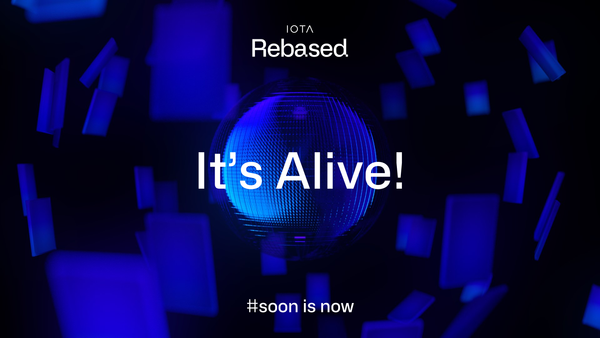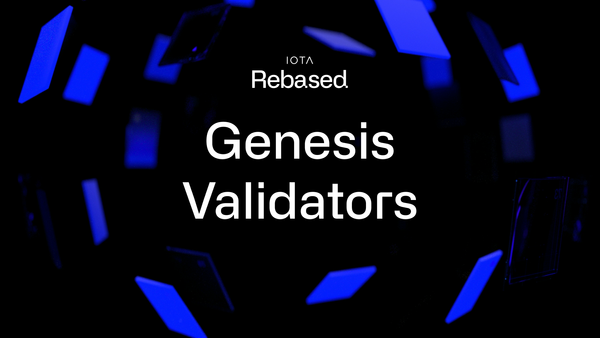The IOTA Rebased Mainnet Upgrade
When, What, and How: Everything You Need to Know
TL;DR:
IOTA’s Rebased upgrade begins on 5.5.2025, 9 am CEST. This guide covers what happens during the upgrade, how to access your assets, and what’s next for the IOTA network.
The date for the highly anticipated IOTA Rebased network upgrade has been set! On 05.05.2025, 9am CEST we will officially begin migrating from the Stardust network to the new IOTA network.
This post explains exactly what to expect during the upgrade, how users can access their assets, and what comes next.
The following is an overview of the important milestones leading up to and following the IOTA Rebased network upgrade.
Preparing Your Assets Before the Upgrade
For IOTA token holders, the Rebased upgrade will be seamless, with no token migration necessary. You simply need to load your existing wallets into the new wallet and you're ready to go.
To smoothly access your tokens and assets after the Rebased upgrade, you must have your wallet's private key, mnemonic phrase, or Firefly or Bloom stronghold file safely exported and accessible.
The existing Firefly wallet will no longer be supported after the upgrade. Instead, the new official wallet will be a browser extension, available on day one. Users are also encouraged to use the complementary IOTA Wallet Dashboard app (available shortly before launch), which provides additional visibility and management options for your assets, including detailed views of vesting schedules from the Assembly-to-IOTA token conversion.
Ledger hardware wallets will continue to be fully supported (EDIT: note that, with the Ledger Nano S being deprecated on Ledger Live, manual installation is required). However, users must install the new IOTA Ledger app, which is compatible with the Rebased IOTA Mainnet.
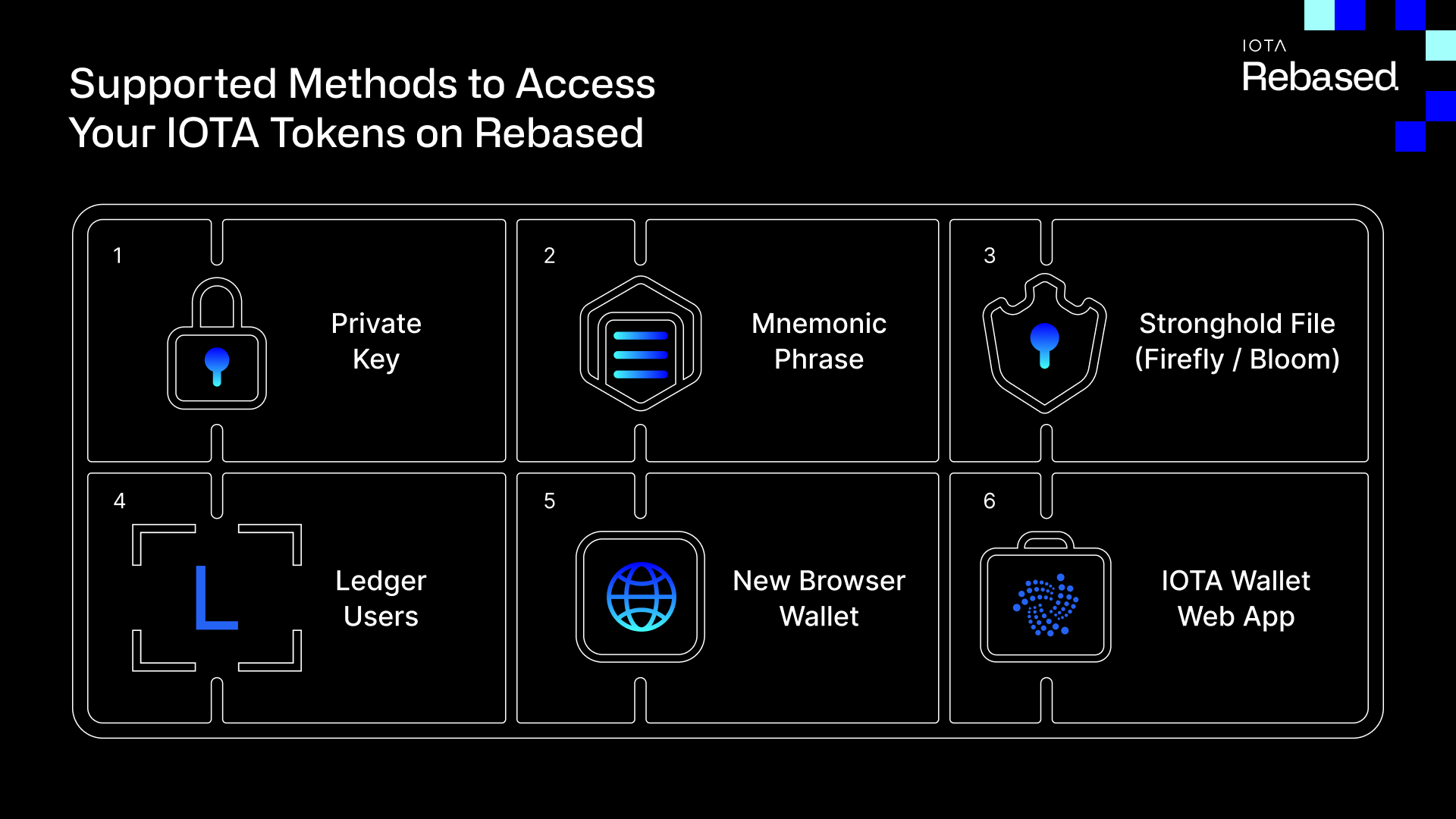
Exchange Preparations
Nearly all exchanges supporting IOTA trading will be fully compatible with the Rebased mainnet upgrade. While trading will continue uninterrupted on exchanges, deposits and withdrawals of IOTA tokens will be temporarily paused during the upgrade. These services are expected to resume shortly after the upgrade is completed.
05-05-2025: The Genesis Ceremony
The IOTA Rebased upgrade involves a carefully orchestrated ceremony conducted by the IOTA Foundation and an initial group of 12 other validators run by trusted entities: IOTA Ecosystem DLT Foundation, Tangle Ecosystem Association, DLT Green, P2P, Luganodes, Twinstake, KILN, Stakin, Nansen, Blockscope, DAIC/Coinage, and Staketab.
Here’s a step-by-step overview of the Genesis Ceremony.

Step 1: Shutdown and Initial Preparations
- The Stardust mainnet and IOTA EVM will be simultaneously shut down at 9am CEST.
- Full snapshots of the Stardust ledger state from multiple Hornet nodes will be taken and internally verified by the IOTA Foundation and validators.
- External verification: Post-ceremony, external parties can independently verify the snapshot to confirm accuracy and transparency.
- Transparent mappings of old addresses to new addresses (particularly for treasuries) will be created. The reason for mapping treasury funds of the IOTA Foundation, the Tangle Ecosystem Association, and the DLT Foundation to new addresses is due to the adoption of a new third-party custody provider, requiring new addresses for these funds.
- All initial data will be transparently shared in a publicly accessible repository.
Step 2: Creating the Genesis Data
- Using the verified snapshots and address mappings, the Master of the Ceremonies (a member of the IOTA Foundation) creates the Stardust Objects Snapshot.
- Validators formally submit their previously prepared validator metadata into the shared repository.
- The delegation map is finalized, explicitly defining validator stakes stemming from our treasuries.
- An unsigned genesis checkpoint is built, containing initial transactions, events, and system instantiation data.
- Additionally, a migration.blob file is created, listing transactions to push migrated ledger objects into the database upon network boot.
Step 3: Validator Verification & Signature
- Each validator retrieves the unsigned genesis checkpoint and migration.blob from the repository.
- Validators independently verify all artifacts against the original input data (snapshots, mappings, metadata).
- Validators digitally sign the checkpoint data, ensuring consensus on network state and transparency.
Step 4: Finalizing the Genesis
- Validators execute a finalization command, producing a signed and finalized genesis.blob.
- The genesis.blob includes all aggregated validator signatures, confirming full validator consensus.
- Validators use genesis.blob and migration.blob files to bootstrap their validator nodes.
Step 5: Launching the Network
- The finalized genesis.blob is published in the shared repository and Amazon S3 for transparency and redundancy.
- The IOTA Foundation releases a new node software version containing a unique chain ID derived from genesis data.
- Validators deploy this updated node software, connecting to each other and bootstrapping the new network.
- Simultaneously, the IOTA Foundation activates necessary infrastructure, including RPC endpoints, node APIs, explorers, and wallet applications.
- The IOTA EVM resumes shortly afterward within a 4-8 hour window.
For those who wish to delve deeper into the technical details of each step, you can explore our comprehensive Genesis Ceremony Playbook.
How to Use the New IOTA Wallet
We've created detailed guides to help you get started quickly and easily with your new IOTA wallet. Below you'll find links to step-by-step instructions covering the most common tasks:
- Migrating From the Old Wallet to the New Wallet
- Sending Transactions
- Staking Your IOTA Tokens
- Managing NFTs and Digital Assets
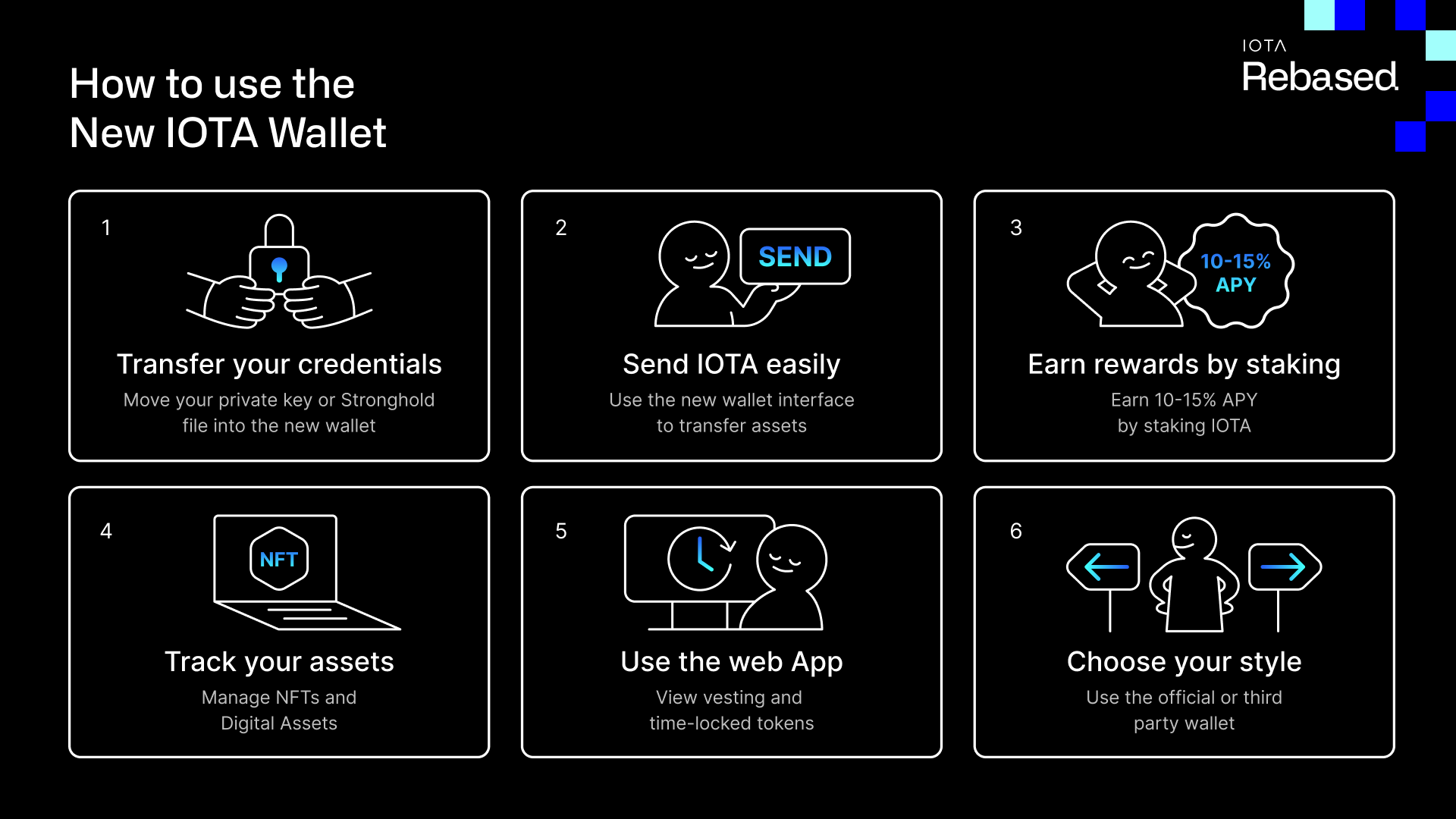
Wallet Alternatives
For additional asset management options and insights, use our complimentary IOTA Wallet Dashboard web app, released shortly before launch. Alternatively, users can also utilize the third-party Nightly Wallet, available as both a web dApp and a mobile app.
Network Insights: Explorer Tools
The new network is supported by two powerful blockchain explorers:
- Official IOTA Explorer on explorer.iota.org.
- Ecosystem-developed IOTAscan.com.

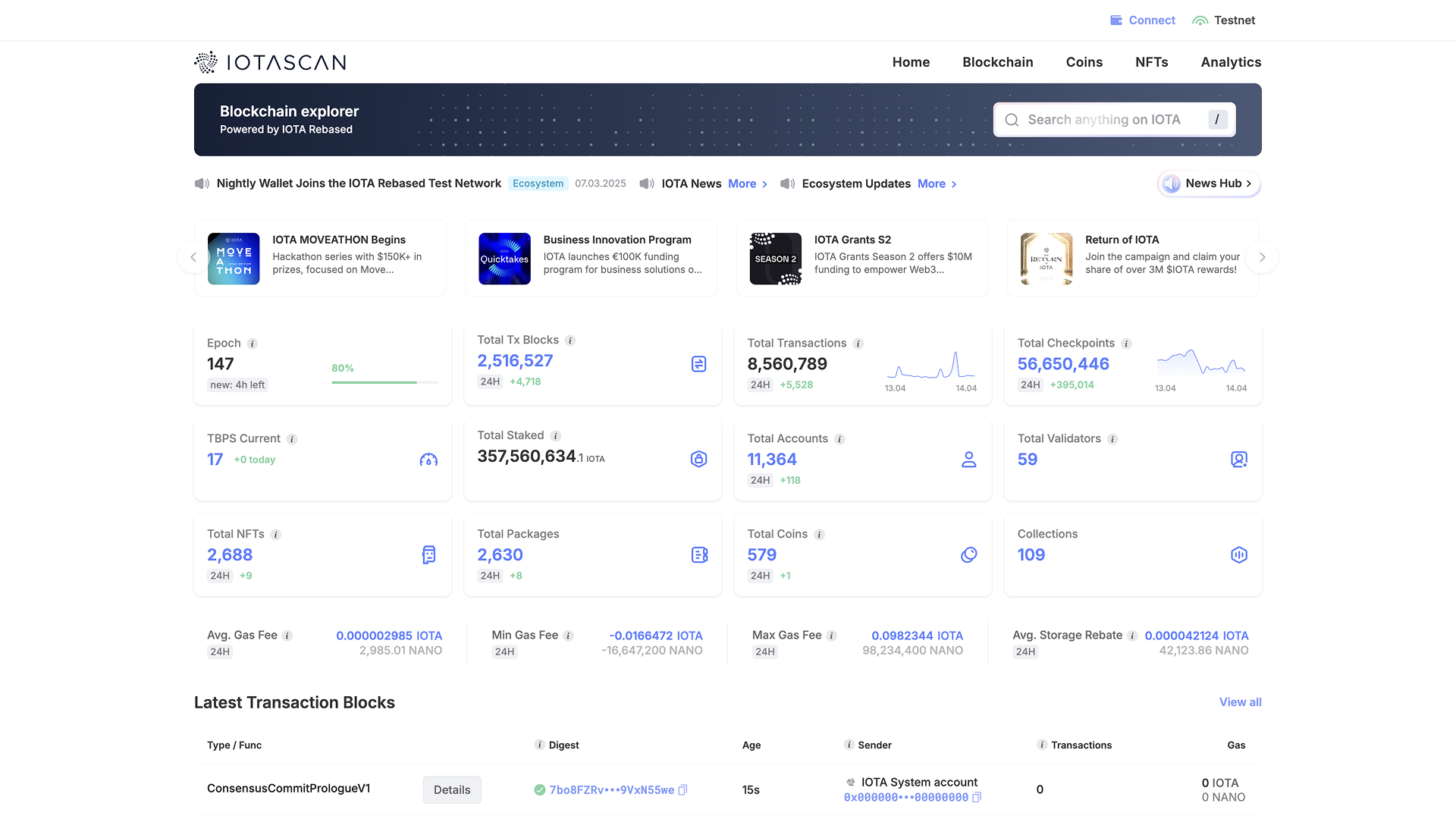
Official IOTA Explorer (Left) and IOTAScan Community Explorer (Right)
These explorers offer visibility into real-time network transactions, validator activity, smart contract interactions, and detailed performance metrics.
IOTA EVM Post-Upgrade
The IOTA EVM resumes operations the same day as the IOTA Rebased launch. Users can seamlessly continue using MetaMask to interact with the EVM. To facilitate token transfers between Layer 1 and the EVM, we've introduced the new IOTA EVM Bridge Web App (previously named EVM Toolkit), which will be available in the coming days. Users are advised to ensure any ongoing trading activities or asset transfers are managed so that several hours of downtime and inaccessibility of these positions are considered.
Growing the Validator Network
The network launches with 13 validators. We'll support additional validators in batches (~10 per day) to reach about 50 validators within 4–5 days post-launch. Over the coming months, the validator set of IOTA will gradually grow to 150 validators.
Token holders are encouraged to actively delegate their stake, further decentralizing the network. Detailed delegation instructions can be found here.
Infrastructure and Ecosystem Availability
- Exchange integrations will be available shortly.
- RPC endpoints and APIs will be immediately available post-launch. Their documentation can be found here.
- Decentralized applications (dApps) will become available shortly after launch (specific details forthcoming).
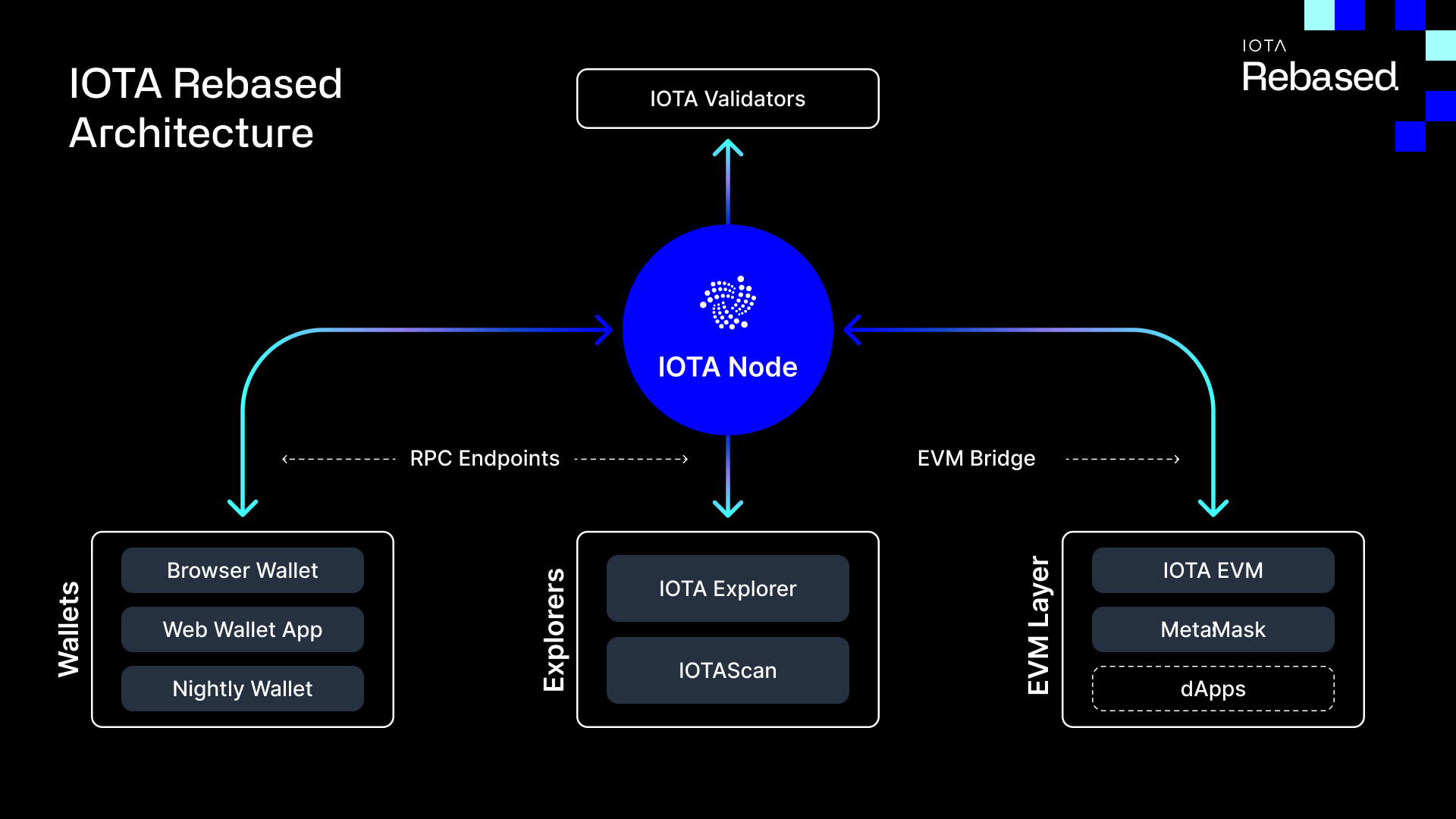
We look forward to welcoming you all to the new era of IOTA with the launch of the rebased IOTA network.
We’re hosting two special X Spaces to shoot the breeze about these changes with Dominic Schiener, the team, and guests:
- X Space IOTA Rebased Townhall | Wednesday April 23rd at 6 PM CEST: https://x.com/i/broadcasts/1zqJVjzbPvpJB
- X Space IOTA Goes Staking | Thursday, April 24th at 3 PM CEST: https://x.com/i/spaces/1YqKDZbzzkDJV/peek
To follow breaking news on upgrade day, be sure to join us on either our Community Discord or the Builder’s Discord and follow IOTA on X.

